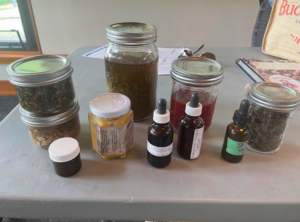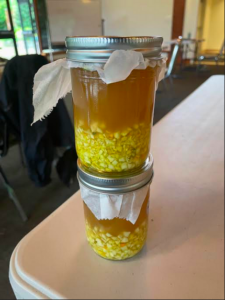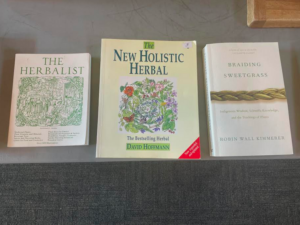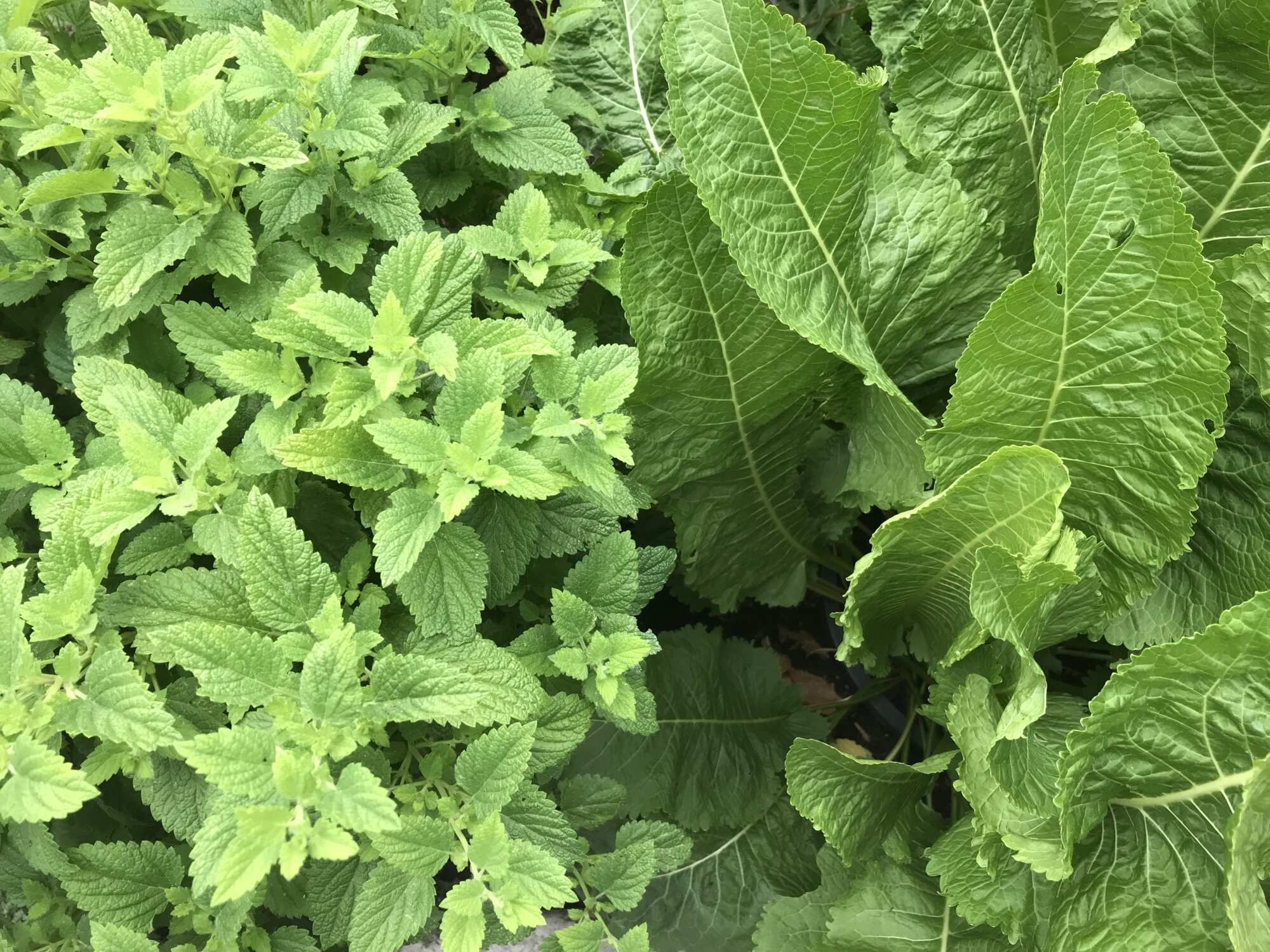Special Topics in Horticulture: Medicinal Plants
Medicinal Plants with Stephanie Jacobs
Student Blog Post by Terra Nicholas and Eleni Robson
On June 15, we were fortunate enough to have Stephanie Jacobs visit our class and share some medicinal plant knowledge with us. Stephanie is a gardener/homesteader, farmer, and herbalist, as well as the owner and manager at Fireweed Farm Medicinal Plant Nursery.
We learned that plants are full of chemical compounds and have been used in healing for as long as humans and plants have lived together. 60,000 year old Neanderthal history records 8 different types of pollen in burial sites, 6 we still use in plant medicine today. Medicinal plants are not as widely used as in the past or as possible, due to a number of societal factors. Much of traditional knowledge was lost through church witch trials, colonialism, and modern medicine. Up 40% of medicines could still be derived from plants through isolating medicinal constituents.
What do plants hold within their tissues? Alcohols, volatile acids, tannins, coumarins, phenols, alkaloids and many other constituents that have actions on the human body, such as being analgesic, anti-inflammatory, carminative, emollient, antispasmodic, diuretic, expectorant, lymphagogue and nervine.
Plant medicines can help us through our day to day with wound care, pain relief, infection prevention and treatment for minor cuts, bites or stings, as well as relief from stomach ache, gas, bloating, nausea and digestive disorders. We can also benefit with immune support and ease of depression, anxiety and overwhelm.
Plant medicines can be part of a holistic, regenerative way of living. I agree with Stephanie, the act of growing, understanding and using medicinal plants nourishes our spiritual connection with the essence of plant energy and provides healing to our bodies. The act of harvesting plant material connects our bodies to the plants physically and further opens an energetic path to healing. Stephanie shared the best practices and times for collecting each plant part. Roots are best harvested in the fall, and best within 2-3 years before perennials get too woody. Leaves can have stronger medicine if the plant is stressed and is good to harvest when stomata are closed, and along with flowers, should be harvested early morning on a sunny day.
Stephanie shared with us how to create an at home herbal medicine chest which consists of effective herbal alternatives to pharmaceuticals that are used to treat common ailments. These common ailments being: wounds, bug bites and bee stings, headaches, colds, immune system support, allergy relief, and more.
Herbal remedies can take on various forms such as infused oils, vinegars, decoctions, and tinctures, however they all exist to serve the same function, to help heal our bodies. The main difference between an infusion and a tincture is the menstruum used to create it. Menstruums are essentially the solvents such as water, alcohol, oil, and vinegar, which are used to extract medicinal properties out of the plants being used.
Stephanie also led us through a walk around the HCP gardens, showing us plants with high medicinal value such as Yarrow and Lemon Balm. We were told about other plants and their specific medicinal benefits such as St. John's Wort and how it is helpful to treat sunburns.
Additionally, we learned about the benefits of incorporating medicinal plants into landscape design. By using these plants in a landscape, it allows for a pollinator habitat and native habitat restoration. Many medicinal plants are also drought tolerant, deer resistant, low maintenance, and pest/disease tolerant, making them a positive addition to any garden.
Near the end of class, we were provided the opportunity to make our own jar of fire cider to take home. Fire cider is a spicy herbal tonic that is meant to support the immune system as well as relieve sinus congestion.
A recipe for fire cider is as follows:
- 1000ml raw apple cider vinegar.
- 100g horseradish, finely grated.
- 40g fresh garlic, finely minced.
- 30g fresh ginger, finely grated.
- 5g fresh turmeric, finely grated.
- 4g spicy pepper (jalapeno, cayenne etc.)
All the ingredients can be added together into a sealed jar and left to steep for approximately 4-6 weeks. The jar should be stored in a dark place and be shaken every few days. After 4-6 weeks, the herbs can be strained out and the liquid remaining can be stored for up to 6 months in a cupboard or 1 year in the fridge.
A few resources for medicinal plant knowledge that Stephanie shared with us include: Stephen Harrod Buhner, Rosemary Gladstar, David Hoffman, and Jessy Delleman of Ravensong Seeds and Herbals.






